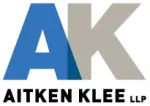In Janssen Inc. v. Actavis Pharma Company, 2016 FC 1361, Janssen sought an order prohibiting the Minister of Health from issuing a Notice of Compliance to Actavis for a generic version of the ADHD drug CONCERTA. Justice O'Reilly held that Actavis's allegations of invalidity and non-infringement of Canadian Patent No 2,264,852 were not justified.
The 852 Patent is generally directed to the use of methylphenidate (MP) using a novel dosage form and a novel method for administering it producing a therapeutic effect. The prior art taught that methylphenidate had issues in maintaining sufficient plasma concentrations. Dr. Saneel Gupta, a named inventor of the 852 Patent, discovered that the issue with prior art formulations of methylphenidate was acute tolerance (tolerance to a drug over a single dosing period), which lead to the invention described in the 852 Patent.
In construing the 852 Patent, the parties agreed with Justice Zinn's prior construction of the 852 Patent (2010 FC 42) that "sustained-ascending dose over time" means that methylphenidate is released from a tablet at an increasing rate, not that plasma concentrations in a patient increased at an ascending rate. Actavis submitted that the skilled person would interpret the words "over time" and "sustained" to mean an ascending dose over an entire dosing period. Justice O'Reilly disagreed based on the expert evidence. He found that for example, to be effective over an 8-hour-period, the sustained-ascending dosage form would have to rise over the course of the first 6 hours or so, not the entire dosing period.
Obviousness
Justice O'Reilly held that the inventive concept of the 852 Patent is the use of a formulation that delivers a sustained-ascending dose of active ingredient over time in order to address acute tolerance.
Actavis submitted that the only difference between the inventive step in the patent and the state of the art is that the inventors confirmed the postulation in the prior art that the problem was acute tolerance to methylphenidate. According to Actavis, the inventors merely conducted routine tests and applied a well-known solution to the problem of drug tolerance: increasing the dose. Justice O'Reilly rejected these arguments, holding:
[48] Actavis's experts have not persuaded me that the invention contained in the '852 patent was obvious. Dr Rue assumed that acute tolerance was a known problem and that an ascending release formulation was the solution. He opined that if a skilled formulator had been asked to make a sustained-ascending dosage form he or she could have done so using routine techniques. Similarly, Dr Hollis assumed that acute tolerance was known to be a potential problem based on the Greenhill paper. However, he would only go so far as to assert that the skilled person would not have dismissed acute tolerance as being one of the problems with Ritalin SR. He went on to state that the skilled person would have tried to replicate the peaks (but not the troughs) in the Ritalin IR TID profile as a means of addressing acute tolerance. He concluded that the skilled person would have easily arrived at a sustained-ascending formulation that would have achieved the desired result.
Infringement
Actavis presented an expert formulator, Dr. Rue, who performed experiments showing the release rate of methylphenidate in Actavis tablets in a variety of media. Justice O'Reilly however doubted the conclusions of Dr. Rue's study:
[59] Janssen identifies a number of problems with Dr Rue's evidence. I need not deal with all of them. I am satisfied that Dr Rue's opinion is questionable in two areas, causing me to doubt his conclusions. First, Dr Rue construed the '852 patent to claim a sustained-ascending release rate of MP over an entire dosing period. I have already considered and rejected that interpretation. However, Dr Rue erroneously relied on that construction to conclude that since the Actavis tablets did not provide a sustained-ascending dose over an entire dosing period, they would not infringe the '852 patent.
[60] Second, Dr Rue relied on mean data, not the results from analyzing individual Actavis tablets. Accordingly, his analysis tells us only whether a batch of tablets might infringe the patent. However, a batch of tablets might not infringe the patent even when a substantial portion of the individual tablets within it might do so. Dr Rue's approach could permit a large quantity of infringing material to enter the market.
Justice O'Reilly instead preferred the evidence of Janssen's evidence of infringement which was based on tablet-by-tablet data, not mean figures for batches. Furthermore, there was evidence from a specialist in child psychiatry who opined that physicians reading the Actavis product monograph would note that it is virtually identical to the CONCERTA product monograph. Therefore, Actavis's allegations of non-infringement were also not justified.
A copy of the decision can be found here.
The content of this article is intended to provide a general guide to the subject matter. Specialist advice should be sought about your specific circumstances.

